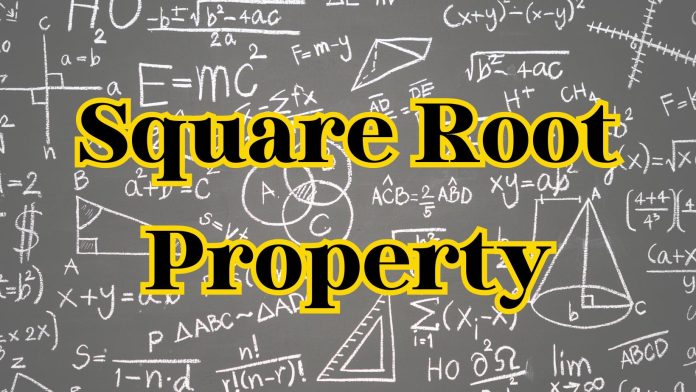In the brain-teasing field of mathematics, mastering algebraic techniques is paramount for students aiming to conquer complex equations with confidence. Central to this endeavor is the square root property, a fundamental concept facilitating the solution of quadratic equations. Understanding its principles and applications is pivotal for navigating quadratic equations and unraveling their solutions.
Let’s delve into the intricacies of the square root property, exploring its essence, relevance, and practical implications and how innovative tools like Solvely can assist students in navigating such intricate mathematical terrain. You can visit https://solvelymath.com/articles/the-square-root-property/ for any problem related to square root property!
Understanding the Square Root Property
The square root property is a fundamental tool utilized in solving quadratic equations of the form (ax^2 + bx + c = 0), where (a), (b), and (c) are constants and (a \neq 0). It states that if (x^2 = k), then (x = pm \sqrt{k}), where (sqrt{k}) denotes the principal square root of (k).
The square root property serves as a gateway to understanding the behavior of quadratic functions and their solutions. By isolating the quadratic term and applying the square root property, mathematicians unravel the roots of equations, paving the way for further exploration and analysis in algebraic contexts.
Essential Components of the Square Root Property
- Quadratic Equations: The square root property applies specifically to quadratic equations, which involve terms raised to the power of two.
- Principal Square Root: The symbol (sqrt{k}) represents the non-negative square root of a number (k). It is denoted as the principal square root to distinguish it from the negative square root.
How to use Square Root Property?
1. Isolation of Quadratic Term: Begin by isolating the quadratic term ( x^2 ) on one side of the equation, leaving the remaining terms on the opposite side.
Example: For ( x^2 – 25 = 0 ), the quadratic term is ( x^2 ), isolated on one side.
2. Application of Square Root Property: Once the quadratic term is isolated, apply the square root property by taking the square root of both sides of the equation, including the (pm) symbol, to account for both positive and negative solutions.
Example: ( x^2 = 25) becomes (x = pm \sqrt{25}).
3. Solution and Verification: Evaluate the square root of the constant term on the right side of the equation to obtain the solutions for (x). Subsequently, verify the solutions by substituting them back into the original equation to ensure they satisfy the equation.
Example: (x = pm \sqrt{25}) simplifies to ( x = pm 5).
Application of the Square Root Property
In the field of mathematics and its other branches, the square root property finds applications in diverse areas such as calculus, differential equations, and optimization problems. Its systematic approach and versatility make it an indispensable tool for mathematicians seeking elegant solutions to intricate mathematical problems.
Conclusion
In conclusion, the square root property serves as a foundational concept in algebraic problem-solving, providing a systematic approach to unraveling solutions for quadratic equations. By understanding its principles and applications, mathematicians and scientists gain invaluable tools for tackling complex problems and exploring the depths of mathematical inquiry.
Mastering the square root property not only enhances mathematical proficiency but also fosters a deeper appreciation for the elegance and utility of algebraic concepts in diverse domains.















